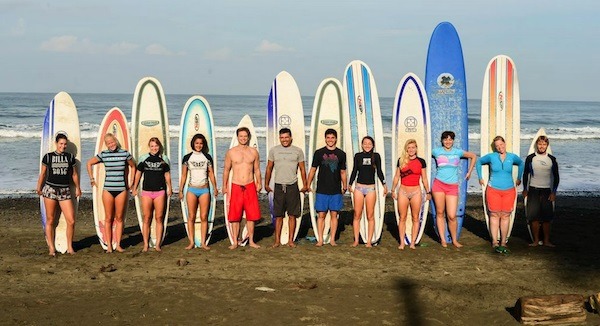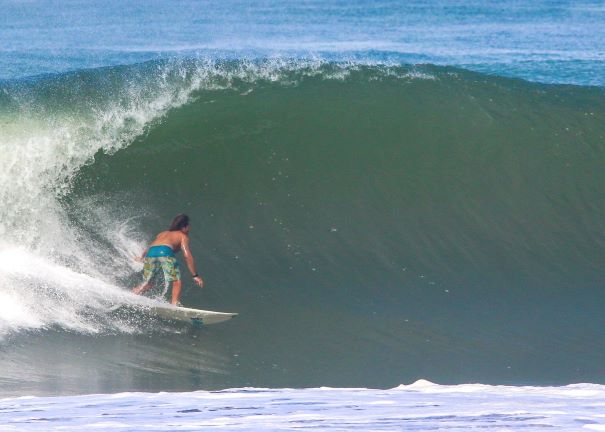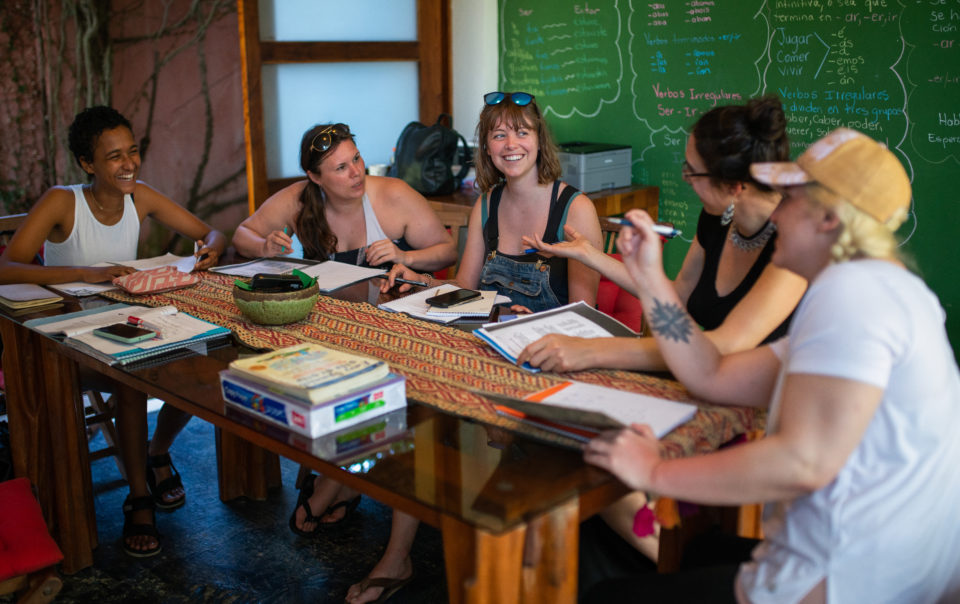
Many students who attend surf camp in Costa Rica are true beginners, having never caught a wave or even laid hands on a board. This primer is for them.
Read on for all you need to know about selecting your first board, and how to take care of it both on and off the water.
How to Choose a Surfboard
The most important thing to know about choosing a surfboard is this—size does matter. While it may be tempting to choose a board based on looks, beginners should seek out a board that is affordable (you’ll most likely ding it a lot as you learn how to surf and handle a board, and the expensive boards ding just as easy as the cheap ones), as well as big and wide.
While watching seasoned surfers, you may have taken note that their surfboards are narrow and sleek, but it would be a mistake to start with a smaller board. Your board size will vary depending on your height and weight, with larger boards corresponding to larger surfers. A wide board will help with stability and will be much easier to learn on.
How to Take Care of Your Surfboard
Surfboards are fragile. And with the wildness of the waves, you would think that most surfboard damage would occur on the water, but that’s not the case. The majority of damage occurs on land, when the board gets bumped or mishandled. (One of the major culprits? Not being careful when setting the board down.)
Avoid dings. Leaning your board against a wall or haphazardly resting it on non-padded surfaces will create dings. Underneath the fiberglass exterior, your board has a foam core. Dings expose the foam core, which when left exposed, will soak up water like a sponge, adding weight to the board and causing internal damage to the board. To prevent this, get in the habit of always checking your board for damage both before and after taking it on the water, so you can repair dings and prevent further damage.
Watch your fins. When catching a wave, never ride it all the way to the beach. Once you reach knee-deep water, jump off your board to protect your board’s fins from breaking off in the sand.
Don’t drag your leash. The leash is the cord that tethers your board to the ankle of your back foot. To prolong your leash’s life, make sure it is tangle- and knot-free before entering the water, and always take it off and wrap it around the fins before exiting the water. Never drag the leash behind you on the sand—sand will get caught in the velcro and shorten the life of the leash.
Keep your board out of the sun. Sure, your surfboard soaks up the sun and surf when you’re busy catching waves from sun-up to last light, but letting your board sit in the sun for extended periods of time can be really bad for your board. The heat from the sun can melt the wax, causing the fiberglass to separate from the foam core, weakening your board.
Wax daily. Fiberglass and epoxy boards need daily waxing before they hit the water to give them proper traction. The first time you wax your board, start by rubbing figure eights then work the wax over the board in a circular motion. Once the initial coat of wax is applied, a daily once-over of fresh wax is all you need to get traction on the water.
Want to learn more about surfing lessons in Costa Rica? Read 5 Life Lessons Surfing Costa Rica Will Teach You and don’t forget to follow us on Facebook and Twitter!
Check out all the fun we’re having, right now, at the School of the World!
to reach our office directly +506.2643.2462
to reach a guest +506.2643.1064
U.S. number that connects to our office
+1-305-517-7689
schooloftheworld (skype)
Check out all the fun we’re having, right now, at the School of the World!
to reach our office directly
+506.2643.2462
to reach a guest +506.2643.1064
U.S. number that connects to our office +1-305-517-7689
schooloftheworld (skype)





